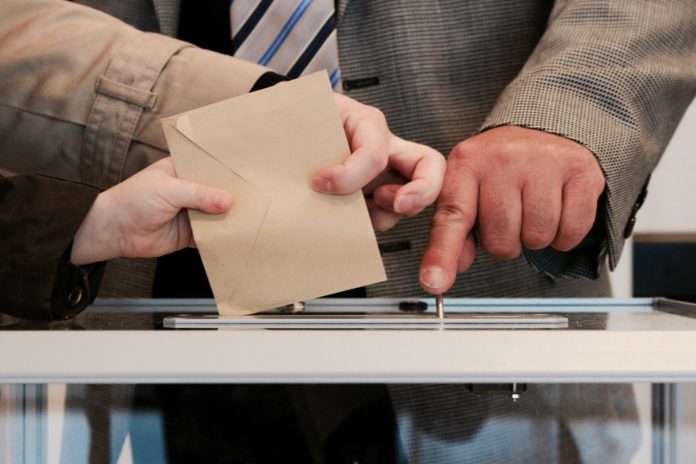This month, British Columbians have the opportunity to significantly change the political landscape—in short, we get to vote on how we vote.
Registered voters have until November 30 at 4:30 pm to mail in their ballot (if you haven’t received a voting package in the mail, you have until November 23 to request one from Elections BC).
Two questions are on the ballot:
- Which system should BC use for provincial elections?
- If BC adopts a Proportional Representation voting system, which of the following voting systems do you prefer: Dual Member Proportional, Mixed Member Proportional, Rural-Urban Proportional (rank in order of preference)
If Proportional Representation gets more than 50% of the votes, the most popular system of the three has to be in place for any provincial elections called on or after July 1, 2021.
There will be a check-in referendum after two elections, so the decision isn’t necessarily permanent.
BC currently uses FPTP: a “winner-takes-all” system.
With this system, each electoral district is represented by one MLA. This MLA is elected by getting the most votes in their district, and parties get one seat per winning candidate. Candidates from larger parties are more likely to get elected and majority governments are common.
Proportional Representation
In a proportional representation voting system, the number of seats held by each party more closely reflects their respective share of the vote. Candidates from smaller parties have more of a chance of getting elected, and coalition governments are more common.
Dual Member Proportional
In DMP, most electoral districts are combined with an adjacent district and are subsequently represented by two MLAs (large rural districts stick to one MLA.). Parties can then choose to put one or two candidates on the ballot: a primary and a secondary. Voters vote for the party of their choice.
The district’s first seat is won by the candidate with the most votes. If a party runs two candidates, the primary fills the seat. The second seats are divvied up in such a way that each party’s percentage of the seats roughly matches that of the votes. Parties fill second seats where its candidates did comparably well. However, a party needs at least 5% of the vote province-wide to get any second seats.
With this voting system, the only decision you’ve got to make is which party you want to support. Simple and straightforward.
Mixed Member Proportional
In MMP, there are two types of MLAs: district and regional. District MLAs represent individual electoral districts, while regional MLAs represent groups of districts (i.e. regions).
District candidates are elected if they receive the most votes out of all the candidates in their district. Regional candidates are subsequently elected from a party list. When a party’s district and regional seats are added together, their percentage of seats will be roughly equal to that of the vote. Again, a party needs at least 5% of the province-wide vote in order to get regional seats.
With MMP, there are a couple ways voting could go: in one scenario, voters get to vote for both a district candidate and a party; in another, voters only vote once — a vote for both the candidate and their party. If MMP wins, a legislative committee will determine which system to use.
This voting system is already used in a number of places, like Germany, New Zealand, Scotland, and Wales. It has the advantage of being tried and true.
Rural-Urban Proportional
In RUP, two voting systems are used: MMP and STV, or Single Transferable Vote. Rural districts use the MMP system described above, while urban and semi-urban districts use STV.
In STV, smaller districts with one MLA are combined into larger districts represented by two to seven MLAs. Parties can run multiple candidates within the same district. Voters rank candidates in the order they prefer, and can rank as many as they like.
Generally, STV requires multiple rounds of vote counting. Each district has a minimum number of votes that a candidate must receive in order to win a seat, which varies depending on the number of votes and seats in the district. Any candidate who gets this many votes is elected.
If a candidate gets more votes than necessary, then those votes are transferred to other candidates based on the voter’s next choice. If a candidate doesn’t get enough votes, then all their votes are transferred to other candidates based on the voter’s next choice. This continues until all the district’s seats are filled.
While RUP has not been used elsewhere, both MMP and STV have been used separately. Australia, Ireland, and Malta all use STV. This is also the most customizable of the voting systems, although it may involve more research on individual candidates.
What politicians are saying
Both John Horgan (leader of the BC NDP) and Andrew Weaver (leader of the BC Greens) support proportional representation, while Andrew Wilkinson (leader of the BC Liberals) is against it.
Proportional representation focuses on cooperation and puts people at the centre of our politics. Tune in Nov 8 at 7pm on CBC & Global networks to watch me debate #prorep with @wilkinson4bc. #pr4bc #bcpoli
— John Horgan (@jjhorgan) October 30, 2018
The tribalism on display in US politics is deeply troubling. The challenges of our time require us to compromise & work together. FPTP is a zero-sum game that entrenches this tribalism. We need prop rep so there aren't just 2 sides in our politics. #bcpoli https://t.co/wRLVa3ZAXo
— Andrew Weaver (@AJWVictoriaBC) October 3, 2018
This referendum has been flawed from the start & is just not good enough for BC. @jjhorgan must explain why he’s trying to change our democracy to hold on to power. On Nov 8, I will be doing everything I can to make sure he does that. #PropRep https://t.co/lickOyJzMq
— Andrew Wilkinson (@Wilkinson4BC) October 30, 2018


